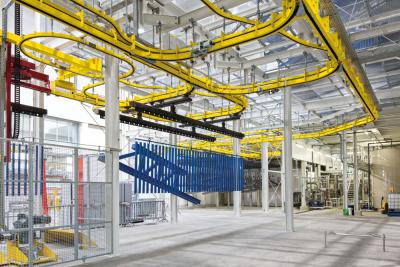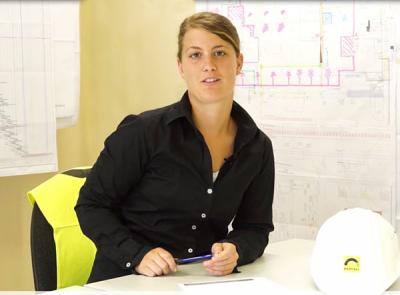_Understanding the future.
Keeping things moving forward is something like second nature to us. We are never quite content with our achievements and are always looking for new approaches. This is the reason we invest so much time and money — to produce even better results for our customers.

Inspired by the efficiency factor
Each year we invest in excess of 200,000 labour hours into developing new products, technologies and services for Doka customers.
New development and adaptation
Apart from saving significant costs in materials and rework, using the Framed formwork Framax Xlife plus yields time savings of up to one third.
New technologies
Product life span is a function of the quality of materials used as well as careful treatment. For instance, only particularly resistant coating of the formwork product surface ensures adequate protection from the highly alkaline material that is concrete. Another example is timber, a natural material: turning it into a robust instrument requires a special process of multiple crosswise glue-bonding combined with removal of defects and subsequent finger-jointing. The same applies to steel used for our products: the new CDP dip coating system has considerably increased coating stability.
Optimising safety and handling
It is one thing to make working with formwork ever easier and save more time as a result. It is quite another to make working with formwork ever safer and therefore more cost-efficient. Doka‘s response to this insight is ongoing development of safety products. One such example is Xsafe plus, a preassembled working platform that can be folded and equipped with side railings for wall and column formwork.
Research and development
As early as 1990, Doka set up an in-house research and development centre. Its staff of more than 100 continuously test new materials (e.g. concrete formulations) and work on developing innovative products and services (e.g. 5D planning). In addition, there is pathbreaking research and development work undertaken in cooperation with universities, senior technical colleges and research institutes as part of open innovation processes.
Digital transformation
How can we support our customers in building even faster and more costeff ectively? The question is inseparably linked to the question about the future of construction. Doka concerns itself intensively with this issue. The best example is Concremote — a modern-day product of digitisation — a tool that Doka has already deployed on more than 150 jobsites. Concremote enables conclusions to be drawn about concrete performance, which means that it significantly boosts productivity. So with Concremote, Doka contributes signifi cantly to Building Information Modelling: BIM is the interactive, end-to-end process optimisation over the entire life cycle of a structure. By acquiring Dutch technology company B|A|S and its highly specialised, 40-strong team of experts, Doka takes another large step toward Industry 4.0. With its own online shop, Doka uses the potential that digitisation offers in the area of e-commerce and allows customers to access and purchase the online offer of the Doka products at any time via all common devices (PC, tablet, smartphone) and operating systems.
Employer in the Industry 4.0 environment
The digitisation of systems and processes has tremendous potential for making organisations more dynamic and faster. That requires the know-how and commitment of the people who work for the company. That's why Doka is always on the lookout for the brightest minds and offers exciting job opportunities and attractive workplaces.


„Using Concremote was definitely worthwhile – we were able to reduce stripping time for the slab from the 7 days allowed for in the standard to 2-3 days. So with less slab formwork needed on site less storage space was taken up and we also saved enormously on costs. Stripping the loadbearing towers after only 10 days instead of 28 meant that overall build time was considerably shorter.“
Meike Kreiser, Site Manager, Baresel GmbH